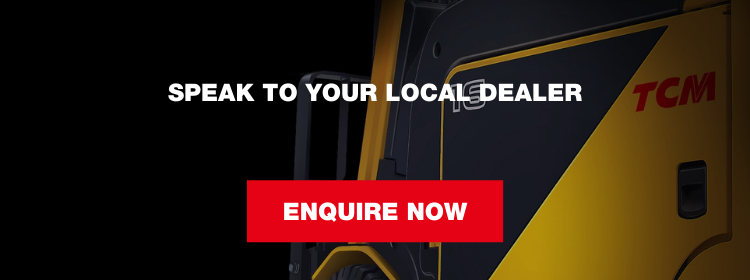Share Article
.jpg?width=699&name=shutterstock_1419795887%20(1).jpg)
There's no getting around it: unsafe forklift driving can result in serious accidents. The British Safety Council says that 25% of workplace transport injuries result directly from forklift truck accidents, and these injuries can be life-changing.
As an employer, you would be liable for employee medical costs in the event of an accident. These can run from £40,000-£200,000, but legal and other costs can also escalate. That's why it's in everyone's interest to ensure forklift driving safety – to protect your workers, drivers, fleet and your business too.
With that in mind, read on for 5 forklift driving mistakes you shouldn't ignore.
Related Read: The True Cost of Forklift Accidents Revealed
1. Forgetting the difference between driving a car
Unlike a car, a forklift only brakes using the front wheels and steers using the back wheels. This difference can cause instability if the forklift is driven incorrectly. Data from NIOSH, the US National Institute for Occupational Health and Safety, found that forklift overturns were the most common cause of driver fatalities. This is a good reason to slow down when performing complex manoeuvres.
Uneven weight distribution (heavier at the back to balance heavy loads at the front) is another difference that needs to be front of mind when operating a forklift.
Even a smaller vehicle like a pallet truck could cause injury, so it's important for operators not to be complacent.
Solution: keep training up-to-date. A little reminder never hurt anyone. In the US, the Occupational Safety & Health Administration (OSHA) estimates that about 70% of forklift accidents could be prevented by more stringent company training policies.
2. Driving too fast
There are numerous reasons to be aware of your speed in a material handling situation. You may have pedestrians present, but you also run the risk of costly collisions with stock or other equipment.
Forklift trucks are very responsive to changes in speed or direction. That means a driver's chance of suffering whiplash is increased if he or she has to stop suddenly. Vibration and shocks are also amplified, which is believed to increase the chances of injury to the lower back.
Solution: we strongly advise setting site speed limits – dependent on forklift type, load, weather conditions, stopping distances, obstacles and/or the presence of pedestrians. This will help to counter the danger presented by speed-related collisions and tipping over. On most modern forklifts, you can also speed restrict the truck from its onboard computer or even have an external speed limiter system fitted.
3. Failing to consider the lack of visibility
Forklift loads tend to be carried at the front, so a driver's view can easily become obstructed. Drivers also need to be extra careful as they lift loads to a height since items could fall and injure someone.
Awareness and care are particularly important in high-traffic areas where pedestrians and forklifts might be near each other. According to the British Safety Council, pedestrians make up 57% of those injured or killed in forklift accidents. Ideally, pedestrian and forklift areas should be clearly segregated.
Other safety issues to consider are concentration and tiredness, both big factors in driver error. Although there can be a lot going on in a warehouse or material handling environment, operators need to stay alert. They may find it harder to concentrate at the end of their shift, while forklift operations can be very repetitive in general.
Solution: we recommend panoramic rearview mirrors to improve the operator's view, helping them avoid collisions and reducing blind spots.
4. Not being careful in noisy situations and environments
These days, many trucks are very quiet, especially if they're electric. That means operators should make doubly sure that passers-by or other operators are aware of the truck.
Solution: commonly given advice is to use the truck's horn to alert people, but in a noisy environment that may not be enough. We suggest using additional visual warnings too, e.g. a flashing light.
Related read: Recommended Safety Features to Reduce Forklift Accidents
It's worth noting that some working environments may require the wearing of ear protection. In those instances, be aware that ear protection can create its own related risks, since it may muffle the sounds of people/vehicles or other dangers. It's vital for drivers to protect their ears properly when necessary, but as always, they need to remember the need to stay alert so everyone stays safe.
5. Failing to consider driver comfort
Forklift driving safety isn't just about collisions. Instead, the cost of minor injuries and muscle strains can really rack up (no pun intended). 8.9 million working days were lost in 2019-20 due to work-related musculoskeletal disorders. Aches and pains can mean time off, or a less efficient workforce.
Solution: to avoid storing up problems for the future, operators and owners need to take Occupational Health seriously. Good practice includes drivers taking a break to stretch, with some companies mandating this as a formal policy.
Related read: Improving operator efficiency by creating comfortable working environments
For more advice about forklift safety, talk to your TCM dealer. They'll be able to tell you about recommended safety features, as well as help you take care of your fleet.

.png?width=50)


